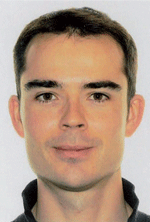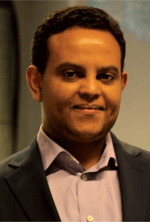How can we reduce the environmental impact of marine seismic surveys?
Andrew Long A C , Mickael Bastard B , Endrias Asgedom B , Jens Fredrik Wisløff B and Magnus Christiansen BA PGS, Level 4, IBM Centre, 1060 Hay Street, West Perth, WA 6005, Australia.
B PGS, Lilleakerveien 4C, Oslo, 0283, Norway.
C Corresponding author. Email: andrew.long@pgs.com
The APPEA Journal 59(2) 909-914 https://doi.org/10.1071/AJ18047
Accepted: 18 February 2019 Published: 17 June 2019
Abstract
Marine seismic sources emit acoustic energy in the form of the seismic wavefield used for the remote sensing of subsurface impedance contrasts in the earth. The environmental impact of seismic sources is typically measured in terms of impulsive acoustic pressure (the sound pressure level, SPL) and the accumulated acoustic energy (the sound exposure level, SEL). We use global examples of the following marine source concepts to quantify the relative SPL and SEL in each scenario:
• Large arrays of air guns activated simultaneously with no significant overlap in emitted acoustic pressure,
• Small arrays of air guns activated simultaneously or in rapid succession with overlap in emitted acoustic pressure,
• Individual air guns activated continuously with overlap in emitted acoustic pressure, and
• Towed marine vibrators operated continuously.
Continuous sources clearly have the lowest SPL and SEL. Examples from various basin settings are shown where benefits in data quality and survey efficiency may also complement the lower environmental impact. Another surprising geophysical outcome is that continuous sources with low SPL do not have compromised signal penetration to deep target depths compared to traditional large arrays of air guns activated simultaneously. These outcomes are relevant to how future marine seismic surveys might be designed to meet stricter environmental controls as well as presenting various new opportunities for how the surveys could be acquired more efficiently and processed.
Keywords: air gun, cetacean, environment, marine vibrator, received sound, seismic, sound exposure level, SEL, sound pressure level, SPL, survey design.

Andrew Long has degrees in Physics and Geophysics from Melbourne University and Curtin University and a PhD in Geophysics from the University of Western Australia. He was a postdoctoral researcher at Stanford University in the US before joining PGS in 1997, where he is now Chief Scientist and Technology Analyst. He is a member of PESA, ASEG, EAGE, SEG and SEAPEX. |

Mickael Bastard received a Bachelor’s degree in Geophysics from the University of Strasbourg (2008) and a Master’s degree in Geophysics from the School and Observatory of Earth Sciences (EOST), Strasbourg (2010). He joined CGG in 2010 as Preprocessing Geophysicist on onshore seismic surveys, in 2013 he joined PGS as Research Geophysicist, and he is now a Senior Research Geophysicist. |

Endrias Asgedom received a PhD in Geophysics from the University of Oslo in 2012. He joined PGS in 2013, where he is now a Senior Research Geophysicist. He is a member of the SEG. |

Jens Fredrik Wisløff received a Master’s degree in Technology with specialisation within numerical mathematics from the Norwegian University of Science and Technology, Trondheim (2007). He joined PGS as Research Geophysicist in 2007 and is now a Section Manager. |

Magnus Christiansen graduated from the University of Oslo with a Master of Science in Environmental Chemistry and later from Heriot-Watt University Edinburgh with a Master of Science (Hons) in Environmental Management. Magnus has previously held the position of Environment Manager in PGS, is now Vice President of HSEQ in PGS and was the Chairman of the Environment Committee in the IAGC. Prior to joining PGS, Magnus worked as an environmental consultant for a broad range of industries, both onshore and offshore. |
References
Hegna, H., Klüver, T., and Lima, J. (2018). Benefits of continuous source and receiver side wavefields. In ‘88th SEG International Exhibition and Annual Meeting, Anaheim, 14–19 October 2018’. pp. 41–45. (SEG: Anaheim, CA). Available at https://library.seg.org/doi/abs/10.1190/segam2018-2995322.1 [Verified 25 February 2019]NMFS (National Marine Fisheries Service) (2016). Technical guidance for assessing the effects of anthropogenic sound on marine mammal hearing – Underwater acoustic thresholds for onset of permanent and temporary threshold shifts. U.S. Department of Commerce, NOAA, NOAA Technical Memorandum NMFS-OPR-55. 178 p
Tabti, H., Wisløff, J. F., Høy, T., and Widmaier, M. (2018). Shot to shot source signature variation correction. In ‘80th EAGE Conference and Exhibition, Copenhagen, 11–14 June 2018’. Tu E 05. (EAGE: Copenhagen, Denmark)
Wisløff, J. F., Barker, D., Hegna, S., Goertz, A., Pesnel, F., and Richelmi, D. (2014). Calibrated airgun source modeling to estimate broadband marine source signatures. In ‘84th SEG International Exhibition and Annual Meeting, Denver, 26–31 October 2014’. pp. 238–242. (SEG: Denver, CO). Available at https://library.seg.org/doi/abs/10.1190/segam2014-1206.1 [Verified 25 February 2019]
Wisløff, J. F. W., Bastard, M., and Asgedom, E. (2018). Environmental impact of a set of marine compressed air source configurations – a comparative study. In ‘80th EAGE Conference and Exhibition, Copenhagen, 11–14 June 2018’. WS14. (EAGE: Copenhagen, Denmark)


